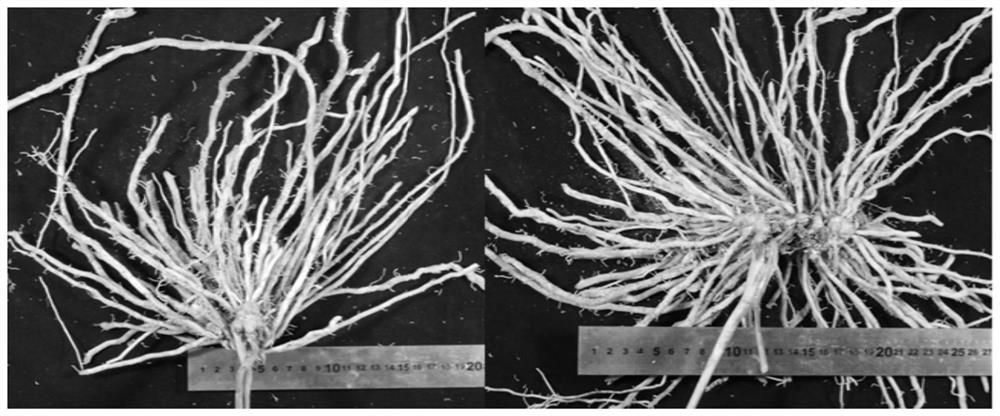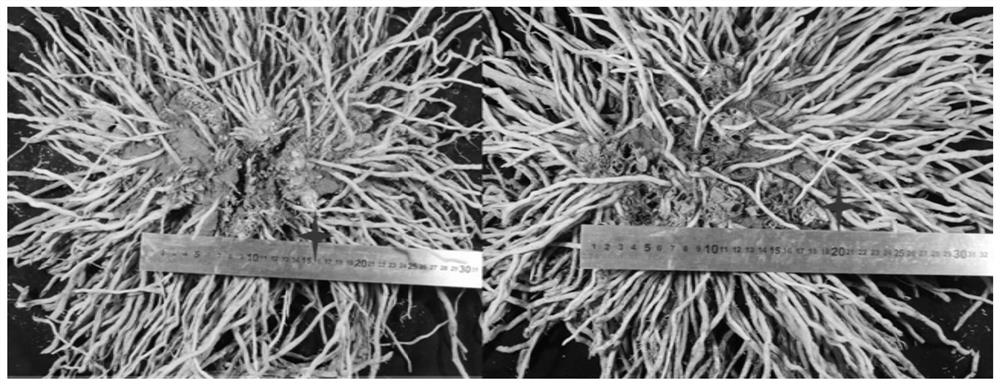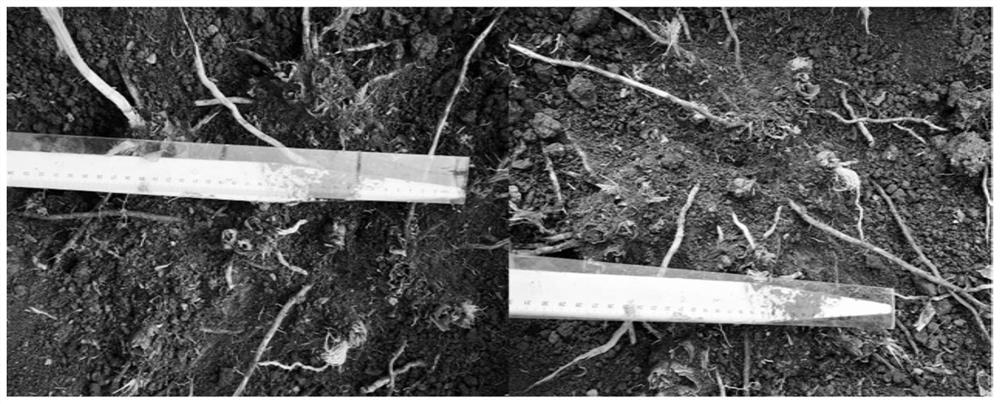Method for efficiently utilizing moisture of asparagus
A technology of asparagus and water, which is applied in the field of high-efficiency water utilization of asparagus, can solve the problems of aggravating root rot, fast water volatilization, and large water dripping, and achieve the goals of reducing the rate of root rot diseased plants, promoting growth speed, and preventing rainwater erosion Effect
- Summary
- Abstract
- Description
- Claims
- Application Information
AI Technical Summary
Problems solved by technology
Method used
Image
Examples
Embodiment 1
[0044] The experimental methods used in the following examples are conventional methods unless otherwise specified.
[0045] This embodiment mainly studies the impact of the distance between the drip irrigation belt and the center of the bulb disc on the underground part and yield, as follows.
[0046] The variety of asparagus is Grande, which is cultivated in greenhouses. Transplanted on May 25, 2018, with a row spacing of 1.5 meters and a plant spacing of 0.3 meters. The management of each treatment room was the same except that the distance between the drip irrigation belt and the center of the bulb disc was different. According to the bulb disc radius (R), the regression formula Y=7.58+1.04R is used to determine the distance (Y) between the drip irrigation tape and the bulb disc center (Y), and the drip irrigation tape placed on the bulb disc in conventional planting is used as a control. Each treatment was replicated three times. Investigate the diameter of the bulb di...
Embodiment 2
[0050] This example explores the impact of opening small ditches and covering the drip irrigation belt with degradable ground cloth on the water consumption of drip irrigation, as follows.
[0051] The asparagus variety is the champion, and it is cultivated in greenhouses. Three-year-old asparagus was selected as the experimental material. Choose two experimental plots. Cultivate asparagus in rows along the downhill direction, and drip irrigation belts are laid on both sides of the asparagus rows. The diameter of the drip irrigation tape is 1.6cm, and the distance between the two holes is 20cm. Control: The drip irrigation tape was placed directly on the soil surface without covering it with a degradable ground cloth. Treatment: Put the drip irrigation tape in the ditch and cover it with a degradable ground cloth. Other administrations were consistent between the 2 treatments and controls. The field water holding capacity is always kept between 70%-80%. Asparagus takes a...
Embodiment 3
[0053] This example explores the impact of setting segmental switches on the drip irrigation belt on the water consumption of drip irrigation at different slopes, as follows.
[0054] The variety of asparagus is Jinglv No. 1, and it is cultivated in greenhouses. Three-year-old asparagus was selected as the experimental material. Each experimental greenhouse is 6 meters wide and 50 meters long. Evenly long downhill with a slope of 15°. Cultivate asparagus in rows along the downhill direction, plant 4 rows of asparagus in each greenhouse, and lay drip irrigation belts on both sides of the asparagus row respectively. Set 2 rows of control and 4 drip irrigation belts in each greenhouse; 2 rows of treatment, also lay the same 4 drip tape. The diameter of the drip irrigation tape is 1.6cm, and the distance between the two holes is 20cm. The switch of each row is set on the water outlet pipe at the top of the slope of the experimental site, and the pressure of the water outlet pi...
PUM
 Login to View More
Login to View More Abstract
Description
Claims
Application Information
 Login to View More
Login to View More - R&D
- Intellectual Property
- Life Sciences
- Materials
- Tech Scout
- Unparalleled Data Quality
- Higher Quality Content
- 60% Fewer Hallucinations
Browse by: Latest US Patents, China's latest patents, Technical Efficacy Thesaurus, Application Domain, Technology Topic, Popular Technical Reports.
© 2025 PatSnap. All rights reserved.Legal|Privacy policy|Modern Slavery Act Transparency Statement|Sitemap|About US| Contact US: help@patsnap.com



